
Epilation is a procedure for removing hair from certain areas of the body. It differs from depilation in that it removes the hair along with the hair follicle. Irritation after hair removal is an unpleasant phenomenon that every second girl encounters (regardless of skin type), and this is normal, experts say.
Reasons for appearance
Hair removal is a procedure that the life of a modern lady cannot do without, but even it requires sacrifice. Microdamages after the procedure result in red spots on the body, itching and an unpleasant appearance of the skin surface. During the procedure, the “body” of the hair and its root are subjected to mechanical damage. The latter, by the way, exceeds the thickness of a hair in size and injures cells from the inside. This is the reason for the formation of irritations.
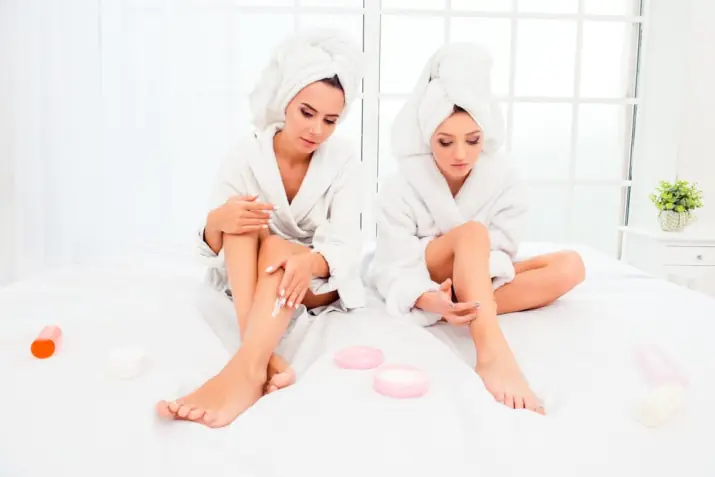
Red dots appear from hair removal - wax, sugar, laser, photoepilation and a regular epilator. These are all potential irritants for our skin. So, The main reasons for this unpleasant phenomenon are as follows:
- First reason– mechanical impact on the dermis by pulling out the hair from the roots. The hair follicle closely “cooperates” with the nerve endings in the cells. When it (the root of the hair) is unceremoniously torn out, everyone suffers - the woman, the hair, and its root. It is especially difficult for the skin.
- After hair root removal, sebum production increases. It literally clogs the pores, which causes irritation and partial ingrown hairs.
- During hair removal, the stratum corneum layer of skin is additionally removed. – pay attention to dry specks of dust on the epilator or in the sugar paste, these are “dead” scales.
- Too thin and sensitive dermis will be covered in irritations in any case - this is its anatomical feature, and you will have to come to terms with it. Minor rashes (and even itching) haunt such a woman for a long time, but experienced epilator and wax users were able to come up with several simple ways to deal with troubles - read about it below.
- Skin that is not yet accustomed to frequent hair removal is subject to irritation. At first (up to six months), the skin may react strongly, but gradually the itching and redness will subside. Already a couple of hours after the hair removal procedure, you can forget about such problems.
- Poor quality wax, sugar, dirty, dull epilator can cause redness of the skin and cause more serious consequences - allergies and pustules. To prevent this, take care of your epilator and contact certified technicians with experience, recommendations and photos of clean cabinets on social networks.
- Residues of wax or sugar on the skin can clog the epidermis, As a result, pustules appear. Thoroughly clean the skin after such hair removal - using special liquids or traditional methods.

So, when red dots appear on the body after hair removal, this is a normal reaction of the skin to an irritant, it is quite natural. But on some women these same spots last for 10 minutes and disappear, while others are tormented for another two or three days and are accompanied by itching. The skin affects how long they stay on the body. On “thick” and not very sensitive skin, the rash goes away within a couple of hours. On light, thin, sensitive skin, they can last up to two to three days.
If hair removal is too harsh a method of hair removal for you, you should give preference to depilation (removing hair with a razor or cream). However, it is not suitable for daily use either - irritation will still strike sooner or later. During depilation, the superficial body of the hair is removed, and after only a day it begins to prick unpleasantly.
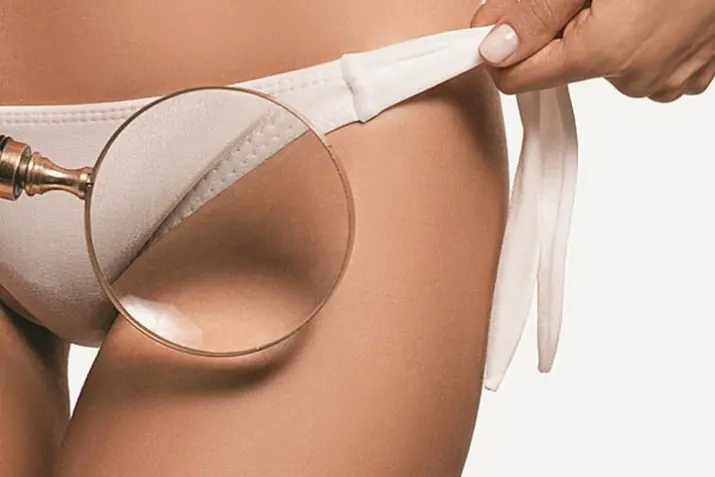
How to avoid?
Proper preparation for hair removal will reduce the extent of its manifestation. Well-cleaned and pre-prepared skin will thank you. The following useful recommendations can be highlighted:
- Before removing hair, cleanse your skin with a scrub - about 24 hours in advance. Abrasive particles will remove dead skin cells of the epidermis and “open” the path to the hair root. They will remove obstacles on the way to the hair follicle. You can use the scrub a couple of hours before the procedure or immediately before it. If the skin is very sensitive and thin, it is better to do this a few hours in advance.
- Clean the skin with a disinfectant composition - it can be hydrogen peroxide, alcohol up to 70 degrees, Miramistin or any pharmacy product.
- You can pre-steam the skin. Then it will be easier for hair follicles to pass through the open pores on its surface, and they will injure the skin less. Cosmetologists do not always praise the steaming method.
- If you're using an epilator, you can apply a lot of cold to your skin. Then the pain sensations will further decrease, since the reaction of the nerve endings on the body will dull.
- After the procedure, be sure to apply a moisturizing cream to the areas of the body “affected” by hair removal: “Bepanten”, “Panthenol”, regular children’s cream - it doesn’t matter. It’s good if the product contains soothing components - aloe vera, plant extracts.
- Before going to the beauty salon, do not visit the sauna or bathhouse for 3 days. It is not recommended to carry out steaming procedures, but you still need to take a shower.

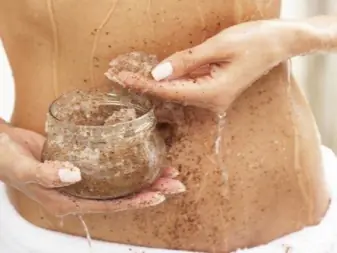


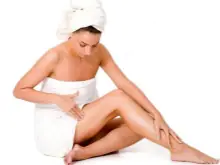
After hair removal it is not recommended:
- wet the skin for 2-3 hours (it is advisable to abstain longer - up to 12 hours);
- sunbathe for 2-3 days;
- use a scrub (you can only do it after a day or two, not earlier);
- use alcohol tinctures and lotions.

Cosmetologists recommend leaving the area that was subjected to the procedure in its natural state and ensuring comfort and peace - for example, do not wear underwear and choose loose cotton clothes (if you had bikini hair removal), do not wear tight trousers and tights (when removing hair on your legs).
The face area is especially sensitive, and irritation above the upper lip or in the eyebrow area is the most unpleasant consequence of hair removal. To get rid of redness that has already formed, cosmetologists recommend treating the area with thermal water or a mild tonic without alcohol. You can use regular peroxide or herbal decoction. They also recommend freezing herbal decoctions in cubes, which will not only help to urgently relieve irritation, but will also be useful in daily dermal care.


If the redness is so strong that it causes discomfort, pain, or if it leads to the formation of spots or pigmentation, this is a serious reason to contact a cosmetologist or dermatologist. There may be an infection in the skin.
How to remove hair correctly?
Wax
It doesn’t matter where the hair is located - in the armpits, on the arms, legs or stomach. Their length should be 0.5-1 cm. Apply heated wax to the body against hair growth or along it (suitable for sensitive skin), place a paper strip on top, press it down and wait for the composition to dry - about 10-30 seconds. Tear off the strip along the hair growth. To reduce pain, press your fingers on the area to be epilated - this will significantly reduce sudden pain and allow the skin to calm down more quickly.
Using wax strips is one of the most affordable methods of hair removal at home. Preheat the strip in your palms and stick it on the area of the body along the hair growth. To make its shape fit the contours of the body, you can trim the corners or change the shape as a whole. When the strip sticks, smooth it with your palm and sharply pull it in the direction against hair growth.
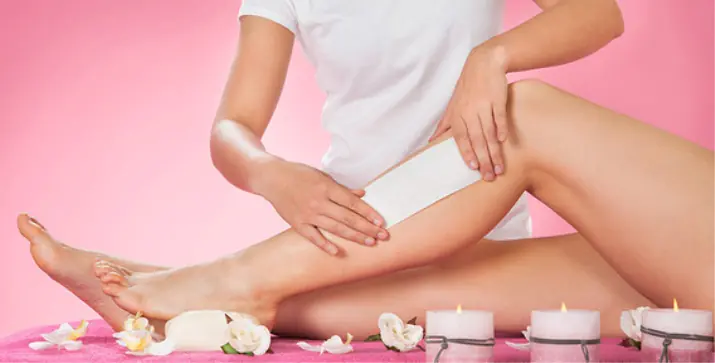
Sugar
The conditions are the same - the size of the hairs must be at least half a centimeter. Apply the melted sugar mixture to the skin according to growth, roll it for 5-10 seconds, grabbing the hairs. Using a movement along the growth, remove the “sweet” strip - this must be done sharply.
Sugar is considered the safest and most affordable method of epilating the area on the face. Take some sticky mixture and place it on the area above your upper lip. Use your fingers to spread it over the surface and roll the hairs into the mass. Using jerky movements, remove the paste against the direction of hair growth.
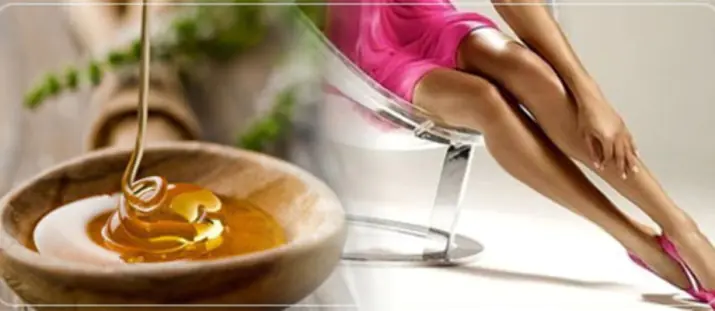
How to quickly calm your skin?
Pharmaceutical antiseptic products and moisturizing creams will help get rid of redness on the skin caused by hair removal:
- any baby cream;
- "Boro Plus";
- "Miramistin";
- "Bepanten";
- "Panthenol";
- "Chlorhexidine";
- Alcohol-free soothing facial lotion;
- thermal water;
- any ointment or cream against burns.
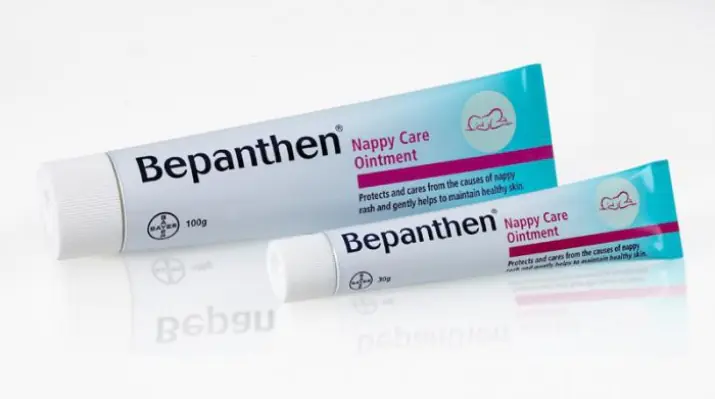


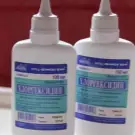
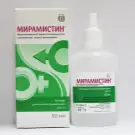
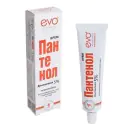
If the irritation does not go away for a long time or you are a supporter of traditional medicine, the following will help:
- Aloe Vera Leaf Juice: Cut the leaf of the medicinal plant lengthwise and place it on the “wound”.
- A decoction of medicinal plants: chamomile, celandine, calendula. It is necessary to brew the herb and let it brew for a couple of hours, after which the affected areas should be wiped.
- A mixture of any base vegetable oil (olive, vegetable, coconut) and tea tree, chamomile, lavender extract.
- Baby powder.


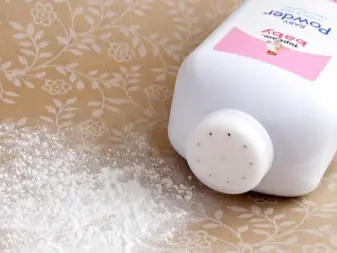

How to remove?
The best way to eliminate irritations is to prevent their occurrence through careful preparation, checking the composition for allergies and expiration date. You should stock up on clean strips (for waxing) and new spatulas for applying and distributing the composition. You need to put cotton pads and soothing lotion near you. Don't forget the disinfectant lotion.
Wax and sugar can cause allergies, so be sure to test for an allergic reaction before your first treatment. Apply a little mixture to the bend of your elbow and assess the situation after 10 minutes. Itching, redness, rashes are a reason to refuse a home procedure.
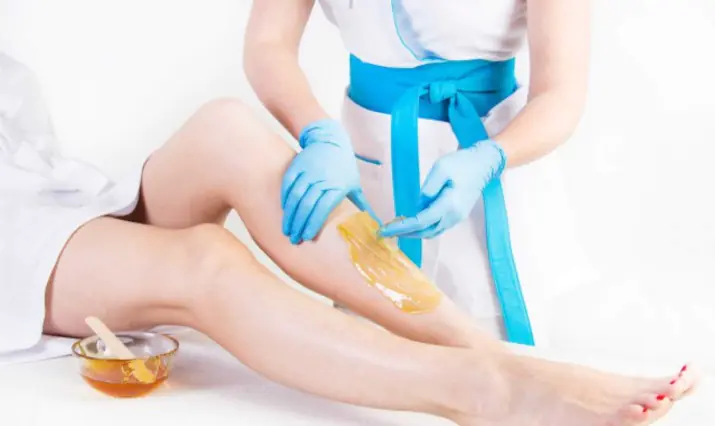
Pharmacy anti-burn ointments and creams will help reduce the resulting redness: due to their light texture, they are quickly absorbed into the epidermis and perfectly reduce irritation. Unfortunately, it is not always possible to remove redness instantly. Sometimes it’s better to apply one cream after hair removal than to wipe your poor skin with your grandmother’s tincture every three minutes. By the way, constant rubbing with cotton pads can also cause increased irritation. You wipe your skin once and that’s enough; next time, use tonic no earlier than a couple of hours later. It’s even better to use a spray - for example, thermal water. You definitely can’t go overboard with it.
Sometimes the skin's reaction is unpredictable: after hair removal by any method, ingrown hairs or pustules often appear. All this slowly leads to the formation of age spots. Ingrown hairs interfere with the normal functioning of the skin and appear on its surface as huge inflamed pimples, which must be promptly and carefully removed.
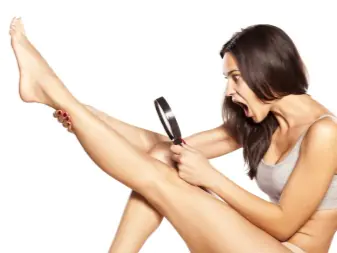

Almost 9 out of 10 cases of their removal are caused by age spots. They can and should be fought. A scrub will help prevent their formation. Cleanse your skin with it about a day before waxing and do not forget to use the product at least 2 times a week in order to remove dead skin cells in time and set the direction of growing hairs.
It will take a long time to treat pigment spots: to do this, you will need to wipe the epidermis with lightening compounds (special lotions without alcohol or regular lemon juice, you can use a cream against pigment formations and combine the above methods). Creams and gels against ingrown hairs will help prevent the formation of inflammation and pigmentation - after the hair removal procedure, they are always used by both professionals in salons and home craftsmen. Pharmacy ointments, like Badyagi, will help cure inflammation.
How to get rid of irritation after shaving, watch the following video
Any type of depilation is stressful for our skin. It doesn’t matter where we remove unnecessary hair - on the face or on the legs - our skin is in shock from such procedures in any case. And if we are talking about waxing or shaving, then even more so. How does the skin react to such stress? Of course, all sorts of unpleasant phenomena for any woman - redness, red spots, ingrown hairs, a feeling of dryness and burning! Is irritation really inevitable after hair removal: how can it be reduced or avoided?
How does irritation manifest after hair removal?
Our skin can react to the hair removal process differently. It depends on its type (sensitive or not), the method of hair removal, the characteristics of the process, and so on. But most often irritation manifests itself as follows:
- Dryness and tightness;
- Peeling;
- Red dots;
- Red spots or widespread redness;
- Ingrown hairs and the appearance of purulent pimples.
The response of our skin after hair removal may vary, but it should not be immediately classified as a serious problem. Remember that slight redness after hair removal is normal! It is normal for the redness to go away within the next 2-3 hours. In girls with sensitive skin, it lasts much longer - up to 2 days, and then it also subsides. Accordingly, there is no need to panic immediately after you leave the cosmetologist’s office. It’s another matter if you notice burns, severe redness or purulent pimples - this is where you should immediately go to the doctor.
Why does irritation occur?
The most common is irritation after waxing. Well, just imagine the condition of your skin when the hairs were torn off from it “by the roots”! In fact, irritation can occur after depilation by any method. So, let's list the main causes of irritation:
- Sensitive skin (especially light skin) – if you have sensitive skin, then I think there is no need to remind you once again that it is, in principle, susceptible to all kinds of irritations, which also last longer than usual;
- Removing the top layer of skin – for example, when shaving with a razor, you remove not only excess hair, but also the top layer of skin. Do you think your feet really like this state of affairs?
- You are doing hair removal for the first time – in the first 2-3 sessions of depilation, your skin will react to the procedures with irritation, because it is simply not used to such treatment!
- Allergic reaction – allergies can be caused by components contained in wax or other products used during hair removal. An allergist will help you find out. In this situation, it is better to change the hair removal method to one that does not cause allergies.
- Poor quality or expired wax – do not forget to check the expiration date of hair removal products, and also study the reputation of their manufacturer (very often the skin becomes irritated due to the use of Chinese-made wax, which is made from cheap ingredients!).
- Lack of special lotions, creams and moisturizing sprays on hand – if you don’t take care of your skin at all after epilation, then irritation is inevitable.
- High pain threshold – here you need to use pain-relieving creams, and for the epilator – purchase a cooling attachment. Without these devices, if you have a high pain threshold, you are guaranteed irritation.
- Ignorance of the rules of hair removal – if you do not have enough knowledge and experience in performing hair removal at home, then it is better to sign up for a beauty salon, where a specialist will do everything.
There are many reasons for skin irritation after removing unwanted hairs. How to prevent irritation after depilation? First, you need to learn how to do hair removal at home correctly. This will significantly reduce the risk of irritation. Well, secondly, you need to learn how to properly care for your skin after procedures, and also add some products to your home medicine cabinet that will save you in an emergency.
How to avoid irritation after depilation?
To prevent your skin from reacting to hair removal with redness and itching, follow these rules for removing excess hair at home:
- Carry out hair removal on clean and steamed skin - wash the area with antibacterial soap, then steam and wipe with medical alcohol, only then begin to remove hairs;
- After the procedure, disinfect the area where hairs were removed using hydrogen peroxide or thermal water;
- For several days after hair removal, do not sunbathe in the sun and avoid self-tanning products, unless you have undergone the QOOL hair removal procedure;
- Use a new razor and do not run it over the same area several times;
- Immediately after hair removal, do not use scrubs with large abrasive particles or a hard washcloth;
- Do not scratch or rub your skin;
- Avoid taking a bath or shower for 2-3 hours after hair removal.
What to do if these tips did not help you and irritation still appears after hair removal?
How to remove irritation after depilation?
If the skin still turns red after depilation and irritation appears on your face, then you need to deal with it. How to deal with skin irritation? This can be done using special products purchased at a pharmacy or cosmetic store, as well as using folk remedies.
Let's start with special products that will help in the fight against irritation. So, the following can come to our aid:
- Any antiseptic ointment (Miramistin, Actovegin, Boro Plus, Rescuer);
- Baby powder (especially since young mothers almost always have it on hand);
- Alcohol-containing solutions of levomycetin or chlorhexidine (we treat the irritated area for several days 3-4 times a day);
- Anti-burn agents, for example, Panthenol (we lubricate the skin generously, then remove excess with an antibacterial wipe);
- Regular hydrogen peroxide – it will help reduce the risk of introducing germs (be sure to apply a moisturizer after the peroxide);
- Baby cream - apply to the area of skin with irritation and rub in a circular motion.
Irritation in various parts of the body
In some cases, for example, when depilating the bikini area or face, you should act especially carefully. Here are some tips.
What to do if irritation appears after bikini waxing? First, after epilation, you should gently scrub the skin. A facial scrub is suitable for these purposes. If you have very sensitive skin, reschedule your bikini area scrubbing until the next day. Use only new razors and special products before and after shaving! After epilation, wear comfortable cotton underwear! Leave synthetics, lace and thongs for later. If irritation does appear, then it is better to use Panthenol, Rescuer, chlorhexidine solution (do not forget that it is applied to a cotton pad, and then the disc is applied to the area of skin with inflammation), a strong decoction of chamomile.
What to do with irritation after epilator? First, we disinfect the treated area of skin (the same miramistin and chlorhexidine will do), then we moisturize the dermis with Panthenol, and then apply a nourishing cream with hyaluronic acid. The last two stages are carried out not immediately after hair removal, but two days after it.
The answer to the question - how to relieve irritation after depilation - also depends on how you removed unnecessary hairs. For example, for irritation after sugaring, a standard antiseptic (hydrogen peroxide, chlorhexidine) and moisturizer (panthenol) are suitable. To reduce the risk of skin irritation, it is recommended to nourish and moisturize the dermis well for several days before sugar hair removal.
Irritation after waxing appears most often due to an allergic reaction to the components of the wax composition. Here it is better to consult with an allergist who will prescribe an antihistamine.
To eliminate irritation after laser procedures you will have to use a special softening spray or cream with herbal ingredients. After laser hair removal, you cannot sunbathe for about a week, and to protect your skin you will have to stock up on sunscreen.
Irritation after depilation on the face– a separate conversation. The skin on the face is more delicate than, for example, on the legs, so redness can hardly be avoided. Remember that before removing facial hair, it is recommended to use an antiseptic ointment as a disinfectant; avoid alcohol and alcohol-containing products - discard immediately! This can only worsen the situation and lead to flaking of the skin. And here aloe extract will come to your aid to cope with irritation. It’s best to buy a cream that has it among the ingredients!
Traditional ways to get rid of irritation
In emergency situations, if none of the above is nearby, folk remedies will help cope with irritation. Here are some simple recipes:
- Potato juice: three one potato on a fine grater, and then apply the resulting pulp to the irritated area for several minutes. After this, remove the potatoes, wash off the remains with warm water, and lubricate the irritated area with baby cream.
- Aloe compress: if you have this plant at home, then cut off its leaf, wash it and cut it in half, and then apply the fleshy part to the place where the redness appears.
- Turmeric mask: mix two tablespoons of turmeric with warm water, apply the resulting paste to the skin and hold for 20 minutes, then rinse with water. After the procedure, it is recommended to lubricate the irritated area with kefir.
- Chamomile decoction (celandine or calendula are also suitable): We prepare a decoction from the herb that we have at home and make lotions with it several times a day.
- Parsley infusion: cut a bunch of parsley and pour boiling water over the greens, let it brew. Then wipe the irritated skin with the resulting infusion.
- Compress made from infusion of fir cones: fir cones must be crushed and poured with boiling water, let it brew. Then you should make compresses from the resulting infusion (keep them on the skin for about 5 minutes).
- Tea tree (or eucalyptus) oil: Mix 2-3 drops of essential oil with a tablespoon of olive oil. Apply the resulting mixture to irritated skin.
These are the simplest ways to relieve irritation for skin that has been “tortured” after hair removal. Many of the listed folk remedies can be easily implemented at home! Using these methods you can relieve irritation after depilation on your legs, armpits and bikini area, but be very careful with irritation on your face! If you do not know all the intricacies of removing excess hair from areas on the face, it is better to go to a beauty salon, where a specialist will perform the procedure for you. Read more about facial depilation in our articles:
I would like to finish today’s article with the opinion of one Swedish scientist who expressed the following thought: how do women do hair removal at home? In a small bathroom, where it’s damp, slippery, cramped and completely uncomfortable! It's no wonder that after depilation your skin becomes irritated! And if it appears constantly, maybe it makes sense to contact a cosmetologist who will carry out a full range of procedures in a cozy office?
About the author of the article:
Cosmetologist, director of 3 cosmetology clinics under her own brand “Lyudmila”. Author of articles for professional online publications and participant in many international symposiums.
The skin on the face is often highly sensitive. But sometimes unwanted hairs appear on it, which have to be removed. How to cope with irritation after such a procedure?
Causes of redness from depilation

Of course, the main reason for redness after facial hair removal is the high sensitivity of the skin, which reacts negatively to microtrauma during hair removal. But sometimes the irritation is particularly severe and does not go away for several days, this may be explained by:
- The first attempts at hair removal are when the skin is not yet accustomed to such interventions.
- Insufficient quality tool. So, if you use an old or cheap depilator that does not capture hairs very well, you will have to go over the same place several times, which will cause more irritation. Another cause of severe redness can be poor-quality wax.
How to avoid?
It is unlikely that it will be possible to completely prevent the appearance of irritation on the face. But simple recommendations will help make its severity minimal and speed up the skin restoration process. The first step is to properly prepare for hair removal:
- It is best to carry out this procedure in the evening. During the period of sleep, the skin will have the opportunity to recover and fully calm down.
- Immediately before the procedure, you should properly prepare the skin. It is advisable to take a warm shower or even a bath, this will steam the epidermis and make it easier to part with unwanted hairs. Afterwards, you can scrub the skin a little in the areas where the removal will be carried out. Finally, you need to pat your face dry with a soft towel, but do not rub it.
- Immediately before epilation, it is important to treat the epidermis with any suitable antiseptic. Budget-friendly and effective Chlorhexidine can be a good find.
If severe irritation regularly occurs after hair removal, you should consult a cosmetologist. Perhaps a specialist will point out any mistakes or advise you to change the method of getting rid of unwanted vegetation to another.
From wax
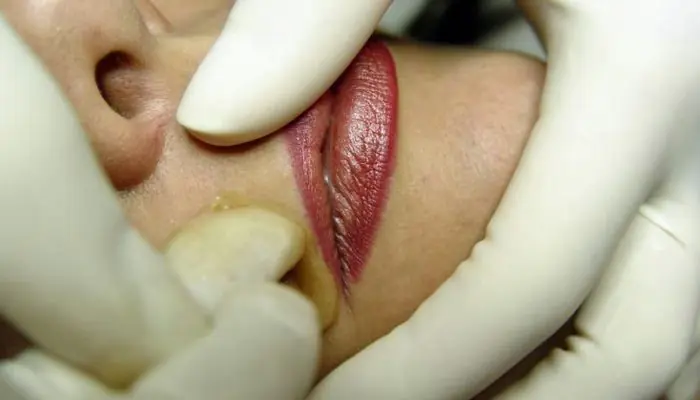
Severe irritation after waxing is most often the result of the procedure not being carried out correctly. Basic recommendations for competently getting rid of unwanted hair:
- It is necessary to conduct an allergy test in advance if this wax composition has not been used before.
- A couple of days before the procedure, it is advisable to begin to moisturize and nourish the skin more.
- Wax should be applied only to dry and fat-free epidermis. It is possible to use baby powder to pre-treat the skin.
- Waxing should be done in the direction of hair growth, and removal should be in the opposite direction. If hairs grow differently on the treated area, you need to get rid of them little by little.
- Do not use wax on areas with pimples, abrasions, scratches or symptoms of any skin diseases.
From an epilator
You can also avoid severe irritation when using an epilator by following a number of simple recommendations:
How to treat the skin after the procedure?
In order for irritation to go away as quickly as possible and not progress, immediately after facial hair removal you must:
- Cool and soothe the skin with an ice pack. You can simply apply it to the epilated area for literally a minute.
- Disinfect the skin with the same Chlorhexidine. The more expensive Miramistin can also be used for this purpose. You should not use alcohol solutions, as they can only aggravate irritation on delicate skin.
- Do not use oils, lotions or baby powder. If such compounds get into the pores of epilated skin, they can cause inflammation.
- Do not wet epilated skin for at least eight to twelve hours.
Treatment of the skin with antiseptics and cold compresses can be repeated several times. Usually only this is enough for the skin to more or less calm down by morning.
How to soothe the skin and remove redness?
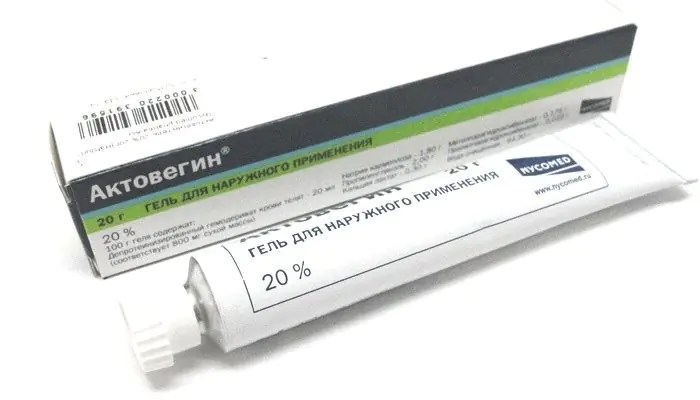
If red dots and spots still appear on your face after hair removal, you need to deal with them in a more directed manner. A good find for this might be:
- Actovegin gel. This is a pharmaceutical drug that perfectly stimulates and accelerates the healing process. It should be applied in a thin layer to problem areas several times a day. Solcoseryl gel also has a similar composition and properties.
- Panthenol. This is a cream product based on dexpanthenol (one of the forms of vitamin B5). It is believed that this medicine, when applied to the skin, effectively moisturizes, stimulates regeneration processes and promotes the rapid disappearance of skin defects. Panthenol can be used twice or thrice a day.
- Chamomile or calendula decoction. Such herbs have good anti-inflammatory and soothing qualities. They can be brewed according to the instructions on the package and used to prepare lotions for problem areas.
- Witch hazel. This is a natural-based ointment that copes well with irritations caused by poor circulation. It should be used twice a day.
If pustules appear on the skin, it is better not to risk it and seek advice from a dermatologist. After all, such a phenomenon may indicate the addition of a secondary infection.



